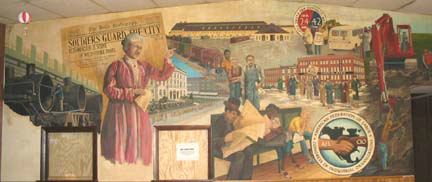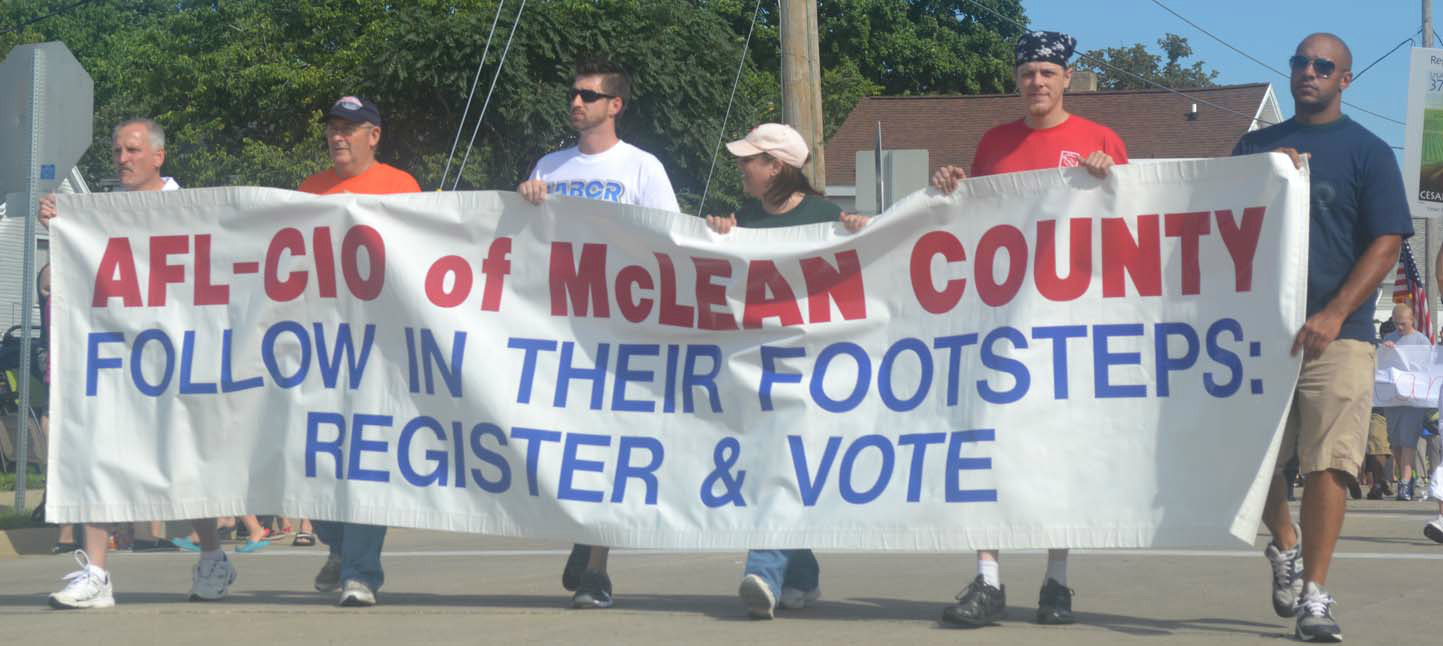|
How could a worker vote for Donald Trump? – head to the factory floor for the answer
American Made: What Happens to People When Work Disappears
By Farah Stockman, 2021
Random-House, New York
“How could a worker vote for Donald Trump?” was a common refrain these past five years. The most frequent TV talking head answer was “racism” and “white privilege.” But was that the real or principal reason?
New York Times reporter Farah Stockman spent the last five years in Indianapolis, following 300 Steelworkers Union Local 1999 members as the Rexnord factory closed. Rexnord is not a household name, but the brand “Link Belt” is an old one, the firm’s lineage before multiple leveraged buy-outs. The Rexnord plant produced ball bearings.
Stockman details the plant closing, the apprehension and lost dreams. She intimately follows three workers: African-American Wally Hall and two white workers, John Feltner and Shannon Mulcahy. On December 16, 2016, Rexnord announced the Indianapolis plant would close, the jobs going to Mexico and Texas; Recently elected Donald Trump tweeted, “Rexnord of Indianapolis is moving to Mexico and rather viciously firing all of its 300 workers. This is happening all over the country. No more!”
Did Trump’s tweet save the jobs? No. On February 4, 2020, Rexnord announced it was also closing its Milwaukee area plant.
Stockman examines her own challenges and privileges as she enters the factory’s working class world. Bi-racial, her parents were college educated and she lived in Cambridge, Massachusetts, a foreign correspondent for the Boston Globe before moving to the New York paper. Election night 2016 the Times sent her to Hillary Clinton’s alma mater, Wellesley College, to report the victory party. Instead, the joyous celebration for alum “Madam President” collapsed with Trump’s victory. In her Cambridge hometown, people were dazed and confused.
People were also dazed and confused in Indianapolis, not because Donald Trump was President, but because their union jobs were going away.
Stockman deftly weaves an intricate story; counter-balancing the laid-off Steelworkers with the statistical evidence on how deindustrialization destroyed American lives and racism’s subtext. The book’s power is its deep dive into those three complicated lives.
Feltner had lost factory jobs and a home previously, each door slammed plunging him down another economic ladder rung. A strong union supporter with Kentucky coal mine roots, Feltner challenged his fellow workers to refuse training their Mexican replacements. He voted for Donald Trump, seeing a lifeline to decent union jobs.
Although he grew up in a stable family, drug dealing shadowed Hall’s past. Questioning an elderly dealer, he reminded Hall that dealing “had no pension.” Hall decided to embrace lower pay but lawful stability in the factory. A gregarious, large man, his work ethic earned him appointment to a union position, working with both labor and management on productivity. His great dream was to open his own catering business, “Wally Gator’s Woodfire Barbeque.”
Mulcahy had endured domestic abuse, failed relationships and fought her way past men to higher pay, working the factory’s temperamental, dangerous heat treatment furnace. She never identified as “feminist” but created her own self-reliant identity, without dependence on a man. Finally accepted by her factory peers, she enjoyed the workday give and take. Her off-hours were spent caring for her handicapped granddaughter Carmella.
Shannon Mulcahy never finished high school but could make $60,000 a year nursing that heat treatment furnace. Wally generously shared with family and friends, always grinning over his barbeque pit, knowing that steady paycheck not only provided family support, but attracted women. Feltner had lost one too many good jobs – Rexnord meant not just stability but pride. Rooted in Appalachian poverty, he claimed to not see racial barriers, but opportunity through hard work. Stockman and Feltner sympathetically debated skin color privilege, with her knowledge of racism’s toll, yet her educational achievements opened a world that Feltner would never know.
The book’s resounding theme is that a good union job is more than a paycheck. A job is meaning, purpose, and a workplace community. As Stockman writes, “Work matters. Too often, those who champion the working class speak only of social safety nets, not the jobs that anchor a working person’s identity. …Work gives us a reason to get out of bed, a place to be, and a source of self-worth. It gives us social networks, mentors and unions that amplify our voice.” Working class camaraderie thrived as people shared meals, smokes, jokes and lived a rough-hewn solidarity.
When the job disappears identity is fragmented. Stockman shares the statistics and Rexnord stories – broken relationships, divorces, drug addiction, alcoholism, depression, and in some cases, an early death – as the lost job destroys self-esteem. African-American workers rebound slightly better, used to unkept promises, while whites are lost, betrayed by that American dream they invested their souls in.
Why could a working person vote for Trump? Because his showmanship promised those jobs would stay. Rexnord workers resented that their supposed champions, the Democratic Party, had delivered job destruction through NAFTA and China’s entry into the World Trade Organization. In working class eyes, the Democratic Party gave lip-service to workers, worried more about identity politics and Wall Street contributions.
So what happens to John, Wally and Shannon? Shannon got a few famed moments when Stockman shared her story, invited to New York City and receiving funds and promises from sympathetic financiers. John found a lower paid, stable hospital maintenance position, lacking that factory floor camaraderie. And Wally – read the book and learn – Wally Gator’s Woodfired Barbeque never graced a food truck’s side.
The U.S. Bureau of Labor Statistics tells us that 6.7 million manufacturing jobs were lost between 1979-2019. College degree professional and financial services gained 17.8 million jobs. Health care and education increased 17 million also, while hospitality gained 9.9 million new positions. According to that same federal agency’s statistics, a college degree averaged $1,305 weekly in 2020, versus $781 for a high school graduate.
But college isn’t for everyone. There are millions of Wallys, Johns and Shannons across this nation who have followed the “American Dream” prescriptions, worked hard, tenaciously faithful until a padlocked and abandoned building proclaimed, “you are not needed anymore.” To understand not only the economic but also the human costs, read Farah Stockman’s American Made, a judicious blend of real life, personal voyage and the economy’s hollowing out cost.
Reviewed by Mike Matejka
|



